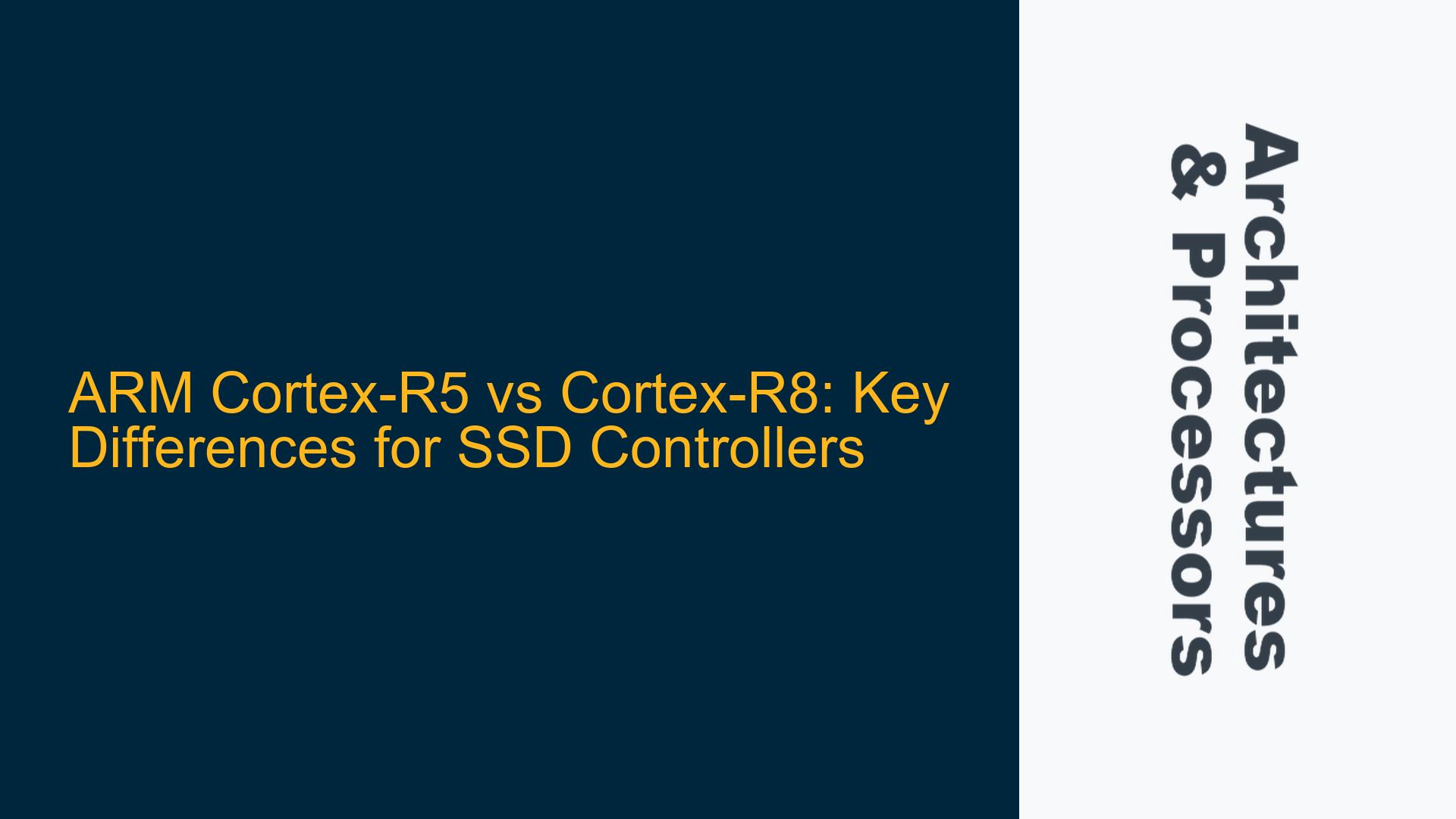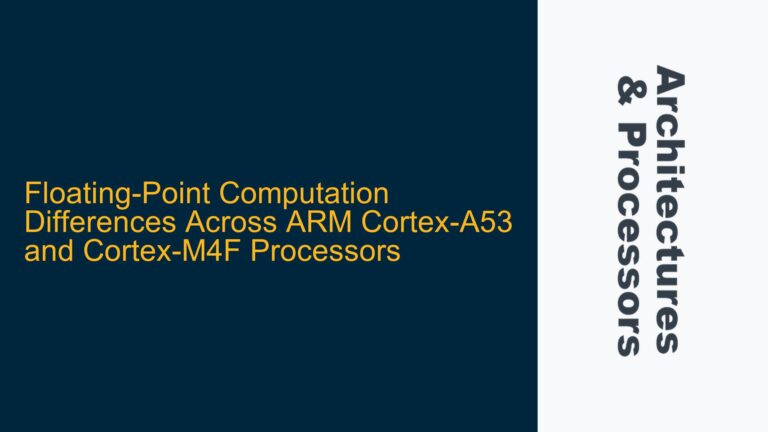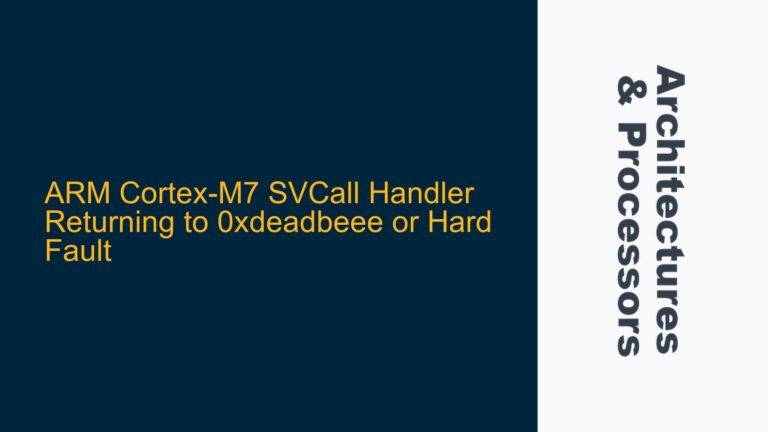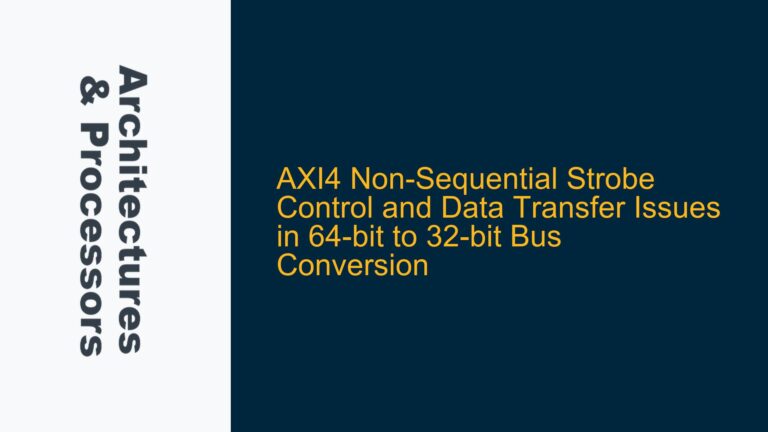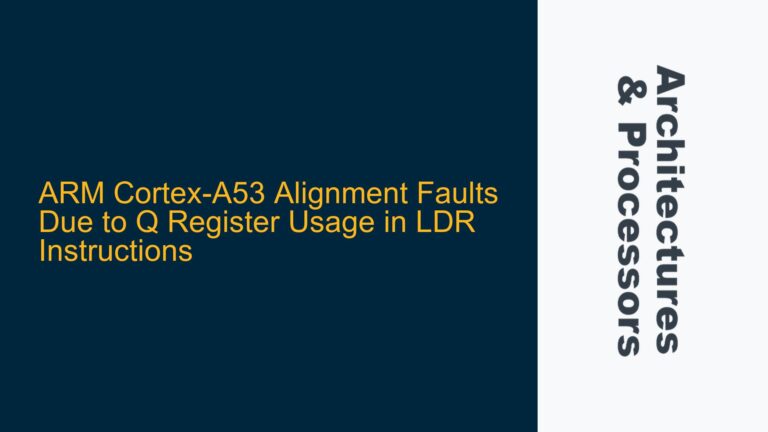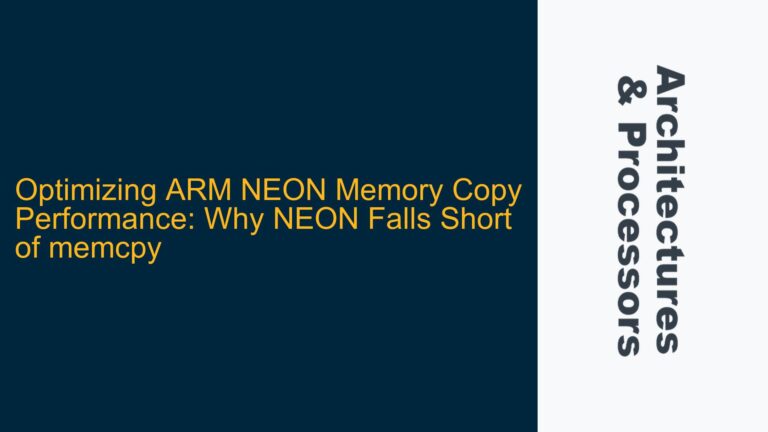ARM Cortex-R5 and Cortex-R8 Architectural Overview for SSD Controllers
The ARM Cortex-R5 and Cortex-R8 are both real-time processors designed for high-performance embedded applications, but they differ significantly in their architectural implementations, which directly impact their suitability for SSD controllers. The Cortex-R5 is a single-core or dual-core processor optimized for deterministic real-time performance, while the Cortex-R8 is a dual-core or quad-core processor designed for higher throughput and scalability. Both processors are part of ARM’s Cortex-R series, which is tailored for applications requiring high reliability, low latency, and real-time responsiveness, such as SSD controllers, automotive systems, and industrial automation.
The Cortex-R5 features a 11-stage dual-issue pipeline, which allows it to execute two instructions per clock cycle under optimal conditions. It supports ARMv7-R architecture, which includes features like hardware divide, optional floating-point unit (FPU), and memory protection unit (MPU). The Cortex-R5 is designed for applications where deterministic behavior is critical, such as in safety-critical systems. Its dual-core configuration supports both symmetric multiprocessing (SMP) and asymmetric multiprocessing (AMP) modes, allowing for flexible task allocation and isolation.
In contrast, the Cortex-R8 is built on the ARMv8-R architecture, which introduces several enhancements over ARMv7-R, including support for 64-bit registers and advanced SIMD (Single Instruction Multiple Data) operations. The Cortex-R8 features a 13-stage dual-issue pipeline and can be configured with up to four cores. Each core in the Cortex-R8 has its own L1 cache, and the processor includes a shared L2 cache, which improves data coherence and reduces latency in multi-core configurations. The Cortex-R8 is designed for applications requiring higher computational throughput and scalability, such as high-performance SSD controllers and network processing.
For SSD controllers, the choice between Cortex-R5 and Cortex-R8 depends on the specific requirements of the application. The Cortex-R5 is well-suited for low-to-mid-range SSDs where deterministic performance and cost-effectiveness are prioritized. Its simpler architecture and lower power consumption make it an attractive option for consumer-grade SSDs. On the other hand, the Cortex-R8 is better suited for high-end SSDs, particularly those targeting enterprise or data center environments, where higher throughput, scalability, and advanced features like error correction and wear leveling are critical.
Performance Bottlenecks and Architectural Limitations in SSD Controllers
When comparing the Cortex-R5 and Cortex-R8 for SSD controller applications, several performance bottlenecks and architectural limitations must be considered. These include differences in core count, cache hierarchy, memory bandwidth, and instruction set architecture (ISA) support, all of which can impact the overall performance and efficiency of the SSD controller.
One of the most significant differences between the Cortex-R5 and Cortex-R8 is the number of cores. The Cortex-R5 is limited to a maximum of two cores, while the Cortex-R8 can be configured with up to four cores. This difference in core count directly affects the parallel processing capabilities of the SSD controller. In high-performance SSDs, particularly those using NVMe 4.0 interfaces, the ability to handle multiple I/O requests concurrently is critical. The Cortex-R8’s quad-core configuration provides a clear advantage in this regard, as it can distribute workloads across multiple cores, reducing latency and improving throughput.
Another key difference is the cache hierarchy. The Cortex-R5 typically includes a smaller L1 cache per core and lacks a shared L2 cache, which can lead to higher latency and reduced performance in multi-core configurations. In contrast, the Cortex-R8 features a more sophisticated cache hierarchy, with larger L1 caches per core and a shared L2 cache. This improves data coherence and reduces the likelihood of cache misses, which is particularly important for SSD controllers that need to manage large amounts of data with low latency.
Memory bandwidth is another critical factor. The Cortex-R8 supports higher memory bandwidth compared to the Cortex-R5, thanks to its more advanced memory controller and support for wider data buses. This is particularly important for SSD controllers, which need to move large amounts of data between the NAND flash memory and the host system. The Cortex-R8’s higher memory bandwidth allows it to handle more data-intensive workloads, such as those encountered in enterprise SSDs or SSDs used for machine learning and AI applications.
Finally, the instruction set architecture (ISA) differences between the Cortex-R5 and Cortex-R8 can impact performance. The Cortex-R8’s support for ARMv8-R architecture introduces several enhancements, including 64-bit registers and advanced SIMD operations, which can improve performance in data-intensive applications. The Cortex-R5, based on ARMv7-R, lacks these features, which can limit its performance in certain scenarios.
Optimizing SSD Controller Performance with Cortex-R5 and Cortex-R8
To optimize SSD controller performance using the Cortex-R5 and Cortex-R8, several strategies can be employed, including workload distribution, cache management, and memory optimization. These strategies take into account the architectural differences between the two processors and aim to maximize their respective strengths while mitigating their limitations.
For SSD controllers based on the Cortex-R5, workload distribution is critical due to its limited core count. In dual-core configurations, tasks should be carefully allocated to ensure balanced utilization of both cores. Asymmetric multiprocessing (AMP) mode can be used to isolate critical tasks, such as error correction and wear leveling, on one core while dedicating the other core to I/O processing. This approach ensures deterministic performance for critical tasks while maximizing throughput for I/O operations.
Cache management is another important consideration for Cortex-R5-based SSD controllers. Due to the smaller L1 cache and lack of a shared L2 cache, developers should prioritize minimizing cache misses by optimizing data access patterns. Techniques such as data prefetching and cache line alignment can help reduce latency and improve performance. Additionally, the use of scratchpad memory or tightly coupled memory (TCM) can provide low-latency storage for frequently accessed data, further reducing the reliance on the cache.
For SSD controllers based on the Cortex-R8, the quad-core configuration provides greater flexibility in workload distribution. Symmetric multiprocessing (SMP) mode can be used to distribute tasks evenly across all cores, maximizing throughput and reducing latency. The shared L2 cache in the Cortex-R8 improves data coherence, but developers should still optimize cache usage by minimizing cache contention and ensuring efficient data sharing between cores.
Memory optimization is particularly important for Cortex-R8-based SSD controllers due to their higher memory bandwidth. Developers should take advantage of the Cortex-R8’s advanced memory controller by optimizing data transfer sizes and aligning data structures to memory boundaries. Techniques such as memory interleaving and burst transfers can further improve memory bandwidth utilization, reducing latency and improving overall performance.
In both cases, firmware optimization plays a critical role in maximizing SSD controller performance. This includes optimizing interrupt handling, reducing context switching overhead, and leveraging hardware acceleration features such as DMA (Direct Memory Access) and hardware-based error correction. By carefully tailoring the firmware to the specific strengths and limitations of the Cortex-R5 or Cortex-R8, developers can achieve optimal performance for their SSD controllers.
In conclusion, the choice between Cortex-R5 and Cortex-R8 for SSD controllers depends on the specific requirements of the application. The Cortex-R5 is well-suited for low-to-mid-range SSDs where deterministic performance and cost-effectiveness are prioritized, while the Cortex-R8 is better suited for high-end SSDs requiring higher throughput and scalability. By understanding the architectural differences and employing appropriate optimization strategies, developers can maximize the performance of their SSD controllers and meet the demands of modern storage applications.
